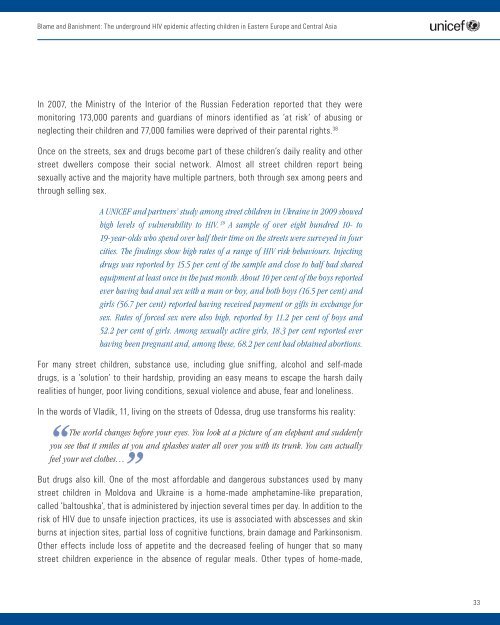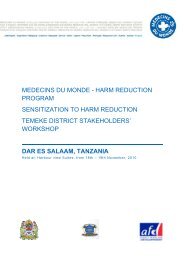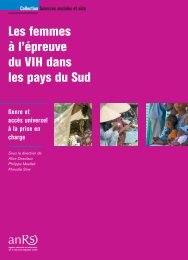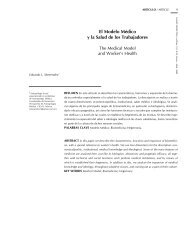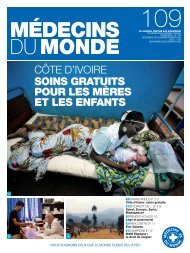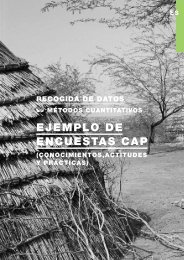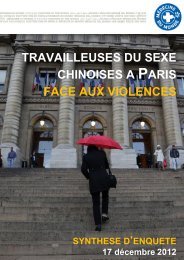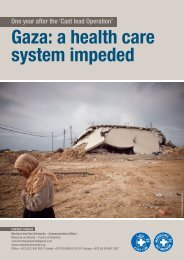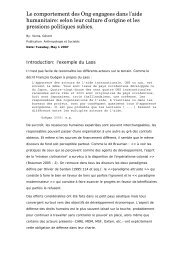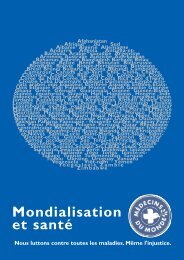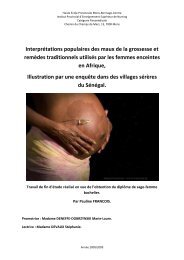Blame & Banishment - Médecins du Monde
Blame & Banishment - Médecins du Monde
Blame & Banishment - Médecins du Monde
You also want an ePaper? Increase the reach of your titles
YUMPU automatically turns print PDFs into web optimized ePapers that Google loves.
<strong>Blame</strong> and <strong>Banishment</strong>: The underground HIV epidemic affecting children in Eastern Europe and Central Asia<br />
In 2007, the Ministry of the Interior of the Russian Federation reported that they were<br />
monitoring 173,000 parents and guardians of minors identified as ‘at risk’ of abusing or<br />
neglecting their children and 77,000 families were deprived of their parental rights. 38<br />
Once on the streets, sex and drugs become part of these children’s daily reality and other<br />
street dwellers compose their social network. Almost all street children report being<br />
sexually active and the majority have multiple partners, both through sex among peers and<br />
through selling sex.<br />
A UNICEF and partners’ study among street children in Ukraine in 2009 showed<br />
high levels of vulnerability to HIV. 39 A sample of over eight hundred 10- to<br />
19-year-olds who spend over half their time on the streets were surveyed in four<br />
cities. The findings show high rates of a range of HIV risk behaviours. Injecting<br />
drugs was reported by 15.5 per cent of the sample and close to half had shared<br />
equipment at least once in the past month. About 10 per cent of the boys reported<br />
ever having had anal sex with a man or boy, and both boys (16.5 per cent) and<br />
girls (56.7 per cent) reported having received payment or gifts in exchange for<br />
sex. Rates of forced sex were also high, reported by 11.2 per cent of boys and<br />
52.2 per cent of girls. Among sexually active girls, 18.3 per cent reported ever<br />
having been pregnant and, among these, 68.2 per cent had obtained abortions.<br />
For many street children, substance use, including glue sniffing, alcohol and self-made<br />
drugs, is a ‘solution’ to their hardship, providing an easy means to escape the harsh daily<br />
realities of hunger, poor living conditions, sexual violence and abuse, fear and loneliness.<br />
In the words of Vladik, 11, living on the streets of Odessa, drug use transforms his reality:<br />
“The world changes before your eyes. You look at a picture of an elephant and suddenly<br />
you see that it smiles at you and splashes water all over you with its trunk. You can actually<br />
feel your wet clothes…<br />
”<br />
But drugs also kill. One of the most affordable and dangerous substances used by many<br />
street children in Moldova and Ukraine is a home-made amphetamine-like preparation,<br />
called ‘baltoushka’, that is administered by injection several times per day. In addition to the<br />
risk of HIV <strong>du</strong>e to unsafe injection practices, its use is associated with abscesses and skin<br />
burns at injection sites, partial loss of cognitive functions, brain damage and Parkinsonism.<br />
Other effects include loss of appetite and the decreased feeling of hunger that so many<br />
street children experience in the absence of regular meals. Other types of home-made,<br />
33


